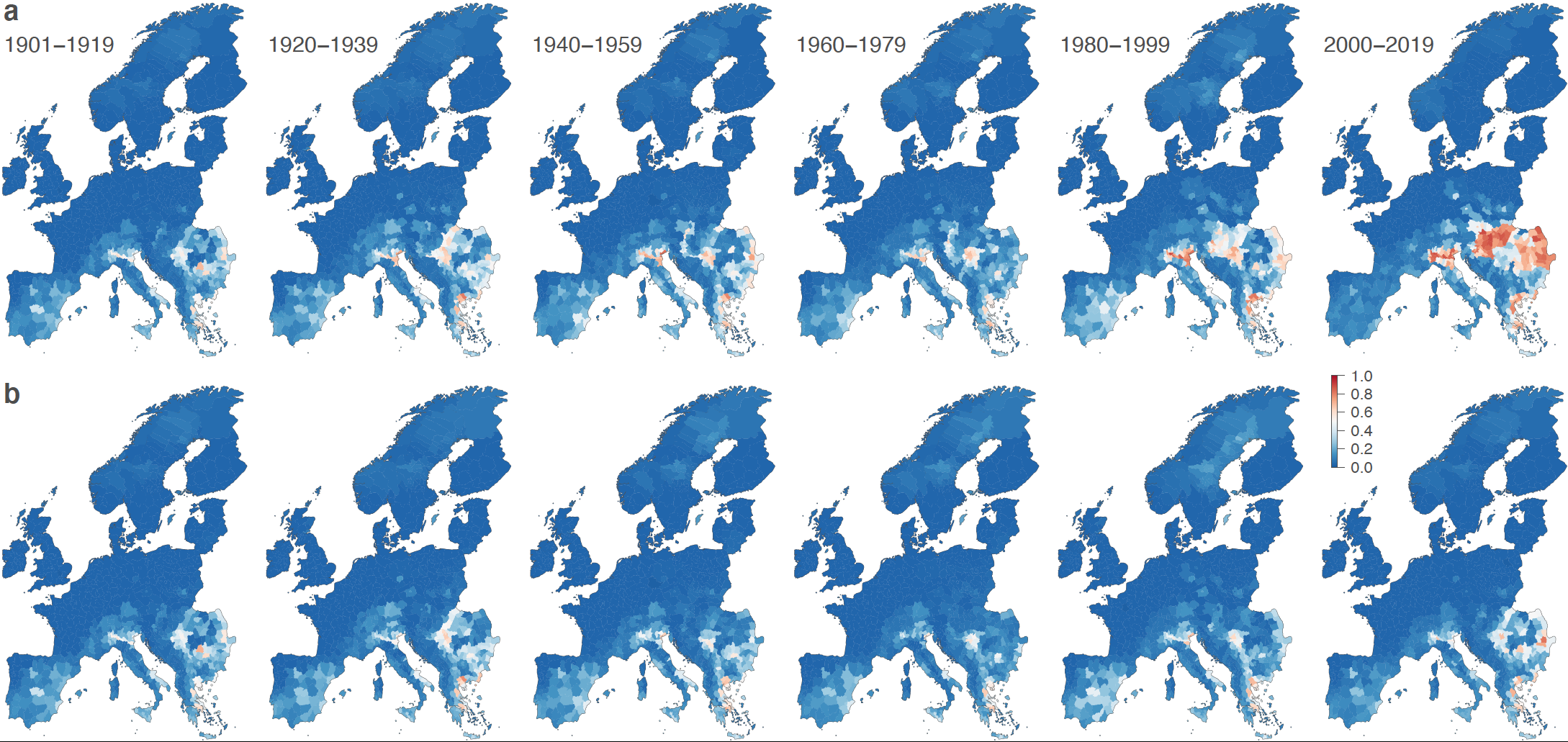New study on the contribution of climate change to the spatial expansion of West Nile virus in Europe
Published on February 13, 2024, by Diana Erazo & Simon Dellicour
Our new study on the contribution of climate change to the spatial expansion of West Nile virus in Europe has been published in Nature Communications. West Nile virus (WNV) is an emerging mosquito-borne pathogen in Europe where it represents a new public health threat. While climate change has been cited as a potential driver of its spatial expansion on the continent, a formal evaluation of this causal relationship is lacking. Here, we investigate the extent to which WNV spatial expansion in Europe can be attributed to climate change while accounting for other direct human influences such as land use and human population changes. To this end, we trained ecological niche models to predict the risk of local WNV circulation leading to human cases to then unravel the isolated effect of climate change by comparing factual simulations to a counterfactual based on the same environmental changes but a counterfactual climate where long-term trends have been removed. Our findings demonstrate a notable increase in the area ecologically suitable for WNV circulation during the period 1901-2019, whereas this area remains largely unchanged in a no-climate-change counterfactual. We show that the drastic increase in the human population at risk of exposure is partly due to historical changes in population density, but that climate change has also been a critical driver behind the heightened risk of WNV circulation in Europe. Read the whole study here.

Figure 2: estimated changes in the risk of local West Nile virus circulation since the beginning of last century across the European continent. The successive maps display the estimated evolution of ecological suitability based on actual environmental data (a) and a counterfactual scenario representing a world without climate change (b).
Reference: Erazo D, Grant L, Ghisbain G, Marini G, Colón-González FJ, Wint W, Rizzoli A, Van Bortel W, Vogels CBF, Grubaugh ND, Mengel M, Frieler K, Thiery W, Dellicour S (2024). Contribution of climate change to the spatial expansion of West Nile virus in Europe. Nature Communications 15: 1196